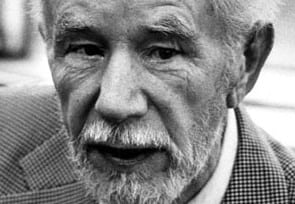





Since 1992, Düsseldorf has been awarding a prize in the name of Helmut Käutner that honors achievements in "German film culture." Käutner came from theater and cabaret, literature and art. From this background, his films developed a quality based on elegance, sensitive visual design, and a focus on the actors.
Born on March 25, 1908, in Düsseldorf, Käutner lost his parents Paul and Claire early on. His father fell in World War I, and the young Helmut Käutner moved to Essen with his mother, who came from the Röntgen family. She died in 1926, the year her son graduated from high school. At the same time, he attended courses at the Folkwang School, then went to study in Munich, sought contact with the stage, and acted at the renowned Kammerspiele. With colleagues, Käutner founded the troupe "Vier Nachrichter." Soon the quartet also caused a stir in Berlin until it was banned in 1935. Integrity and wit were already considered "subversive."
Käutner, the master of the subtle, nuanced, and ironic, was not an ally of the Nazis. The term "inner emigration" fits him well. He made musical nonsense, combined love and pain, and composed a "Romance in Minor" during the days of steel storms. He skillfully avoided official national filmmaking. His niche films show that the personal does not necessarily have to be unpolitical. "Desertion films" is what someone wisely identified them as. "Unter den Brücken" from 1944/45 is a film in civilian life while the world around him stood rigidly. His poetic realism is a protest against the loud, brutal, vulgar, and murderous.
Käutner remained a special case even after the end of the Nazi era – a chameleon and a "last dandy" (Artur Brauner). From the 1930s to the late 1970s, he made over 50 films, examining the Nazi dictatorship and Hour Zero, reconstruction and economic miracle, the 68 revolts, and the increasingly comfortable West German democracy through the camera. Käutner often turned against the prevailing times, their spirit and lack of spirit. Although he created very popular entertainment films, they are infused with a counter-current, also against arrogant national consciousness. Karsten Witte described these films as testimonies of the "unexplained civil war in the Federal Republic of Germany." "The rest is silence," a Hamlet paraphrase set in the Ruhr area, is one of these counter-films.
With the harbor romance "Große Freiheit Nr. 7" (1943/44), no state could be made. When Hans Albers picks up the ship's piano, the colors begin to shine fantastically, and he sings "La Paloma," everything becomes a fatal feeling. In "Unter den Brücken," where two inland shipmen (Carl Raddatz, Gustav Knuth) court a girl (Hannelore Schroth), the war is absent. A conjured black-and-white, laconic, delicate, and humorous.
However, in public perception, other works of his have pushed forward, more colorful and louder. In costume and uniform films, Käutner somewhat noncommittally wrapped his criticism of the circumstances, including Zuckmayer's "Hauptmann von Köpenick" with Heinz Rühmann or "Des Teufels General" and "Schinderhannes" with the colossal masculine Curd Jürgens. Here, the German character could heal from civil disobedience.
Thus, Käutner became the key filmmaker of the young Federal Republic. His stars included Ruth Leuwerik, Liselotte Pulver, Maria Schell and Romy Schneider, Horst Buchholz, O.W. Fischer, Gert Fröbe, Hardy Krüger, Maximilian Schell, and Bernhard Wicki. He was internationally celebrated and invited to Hollywood for two productions. Art in film, Käutner, who died in 1980, once said, is "actually a kind of contraband." Sometimes, he was able to transport this rare good.

